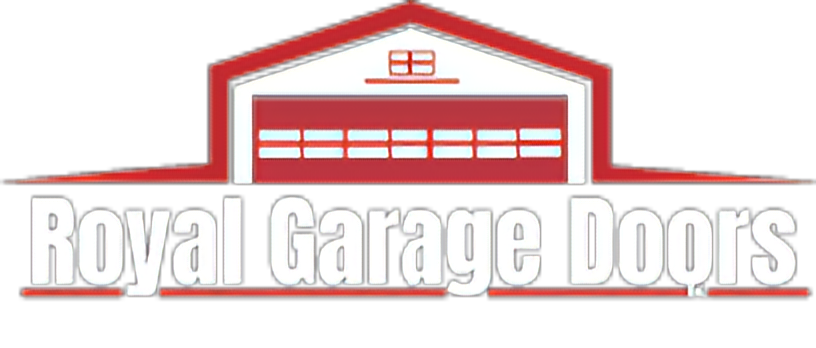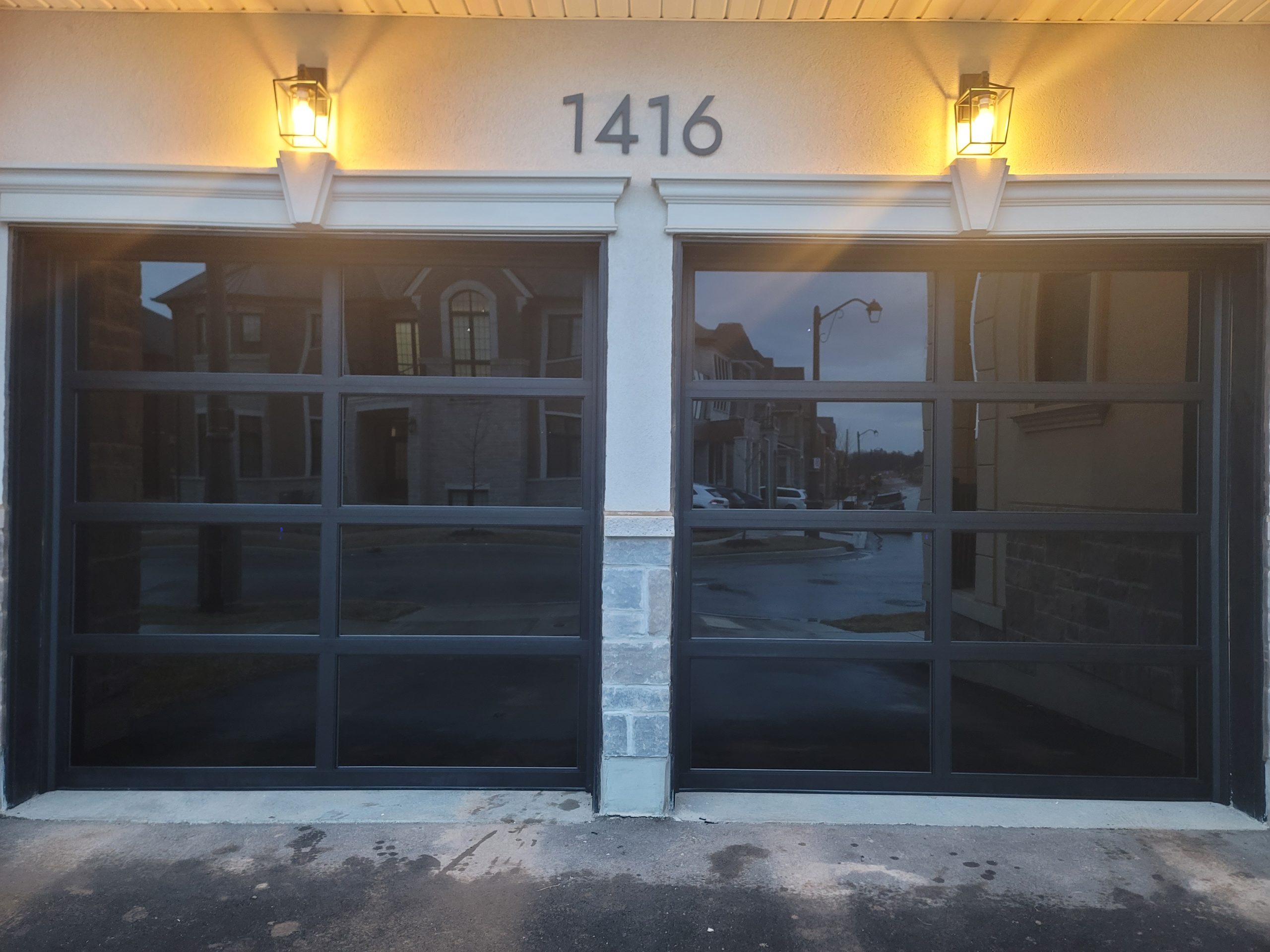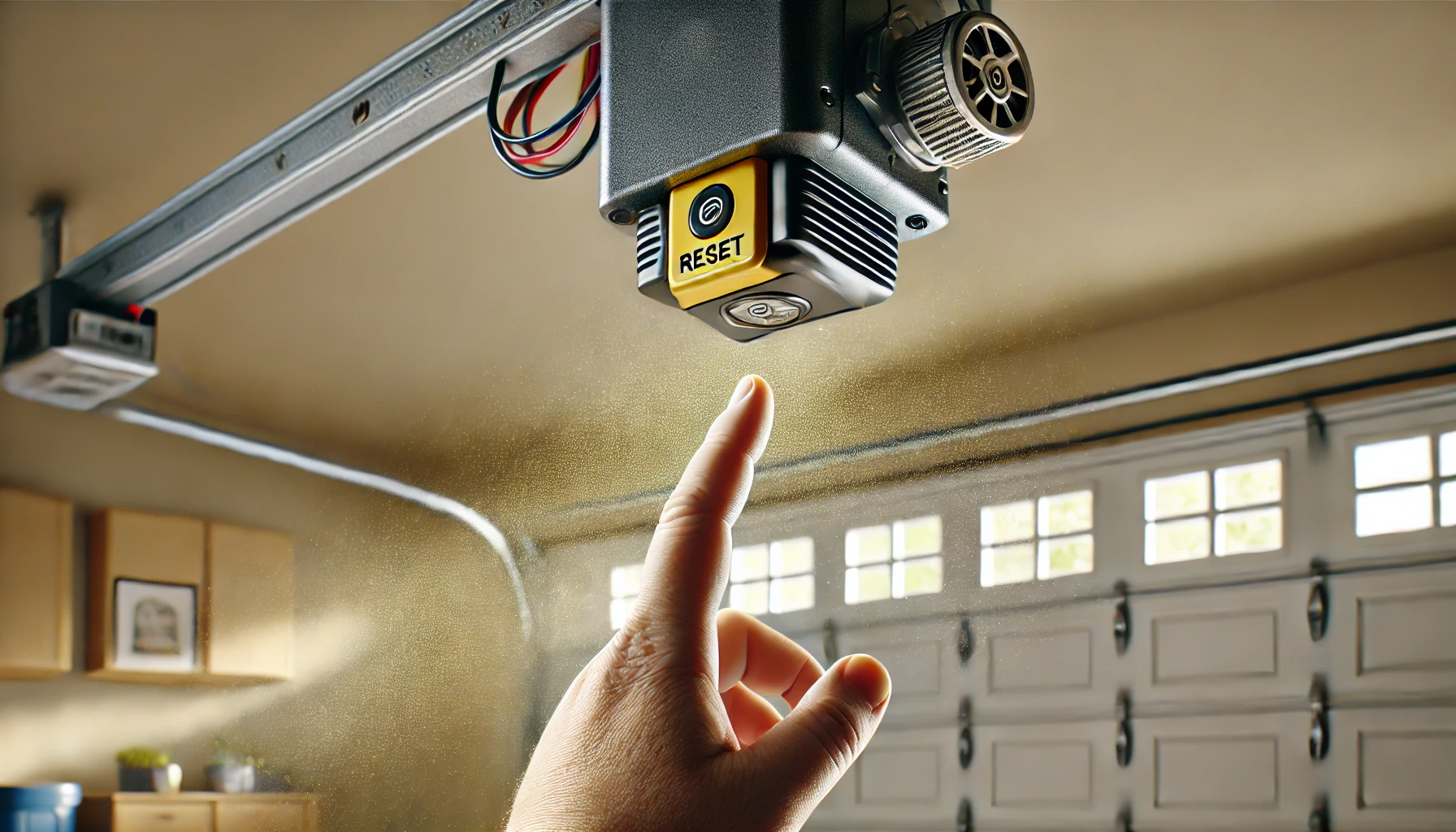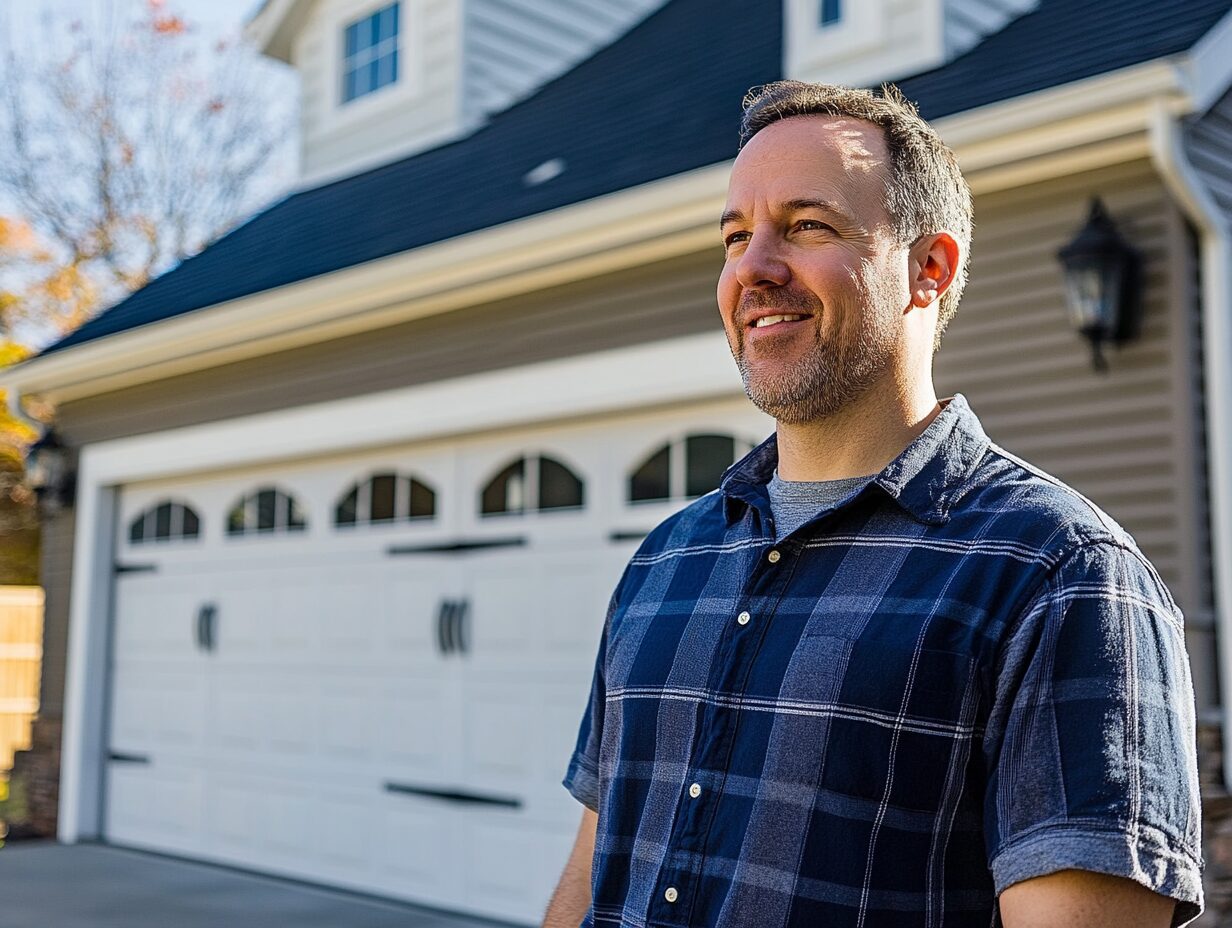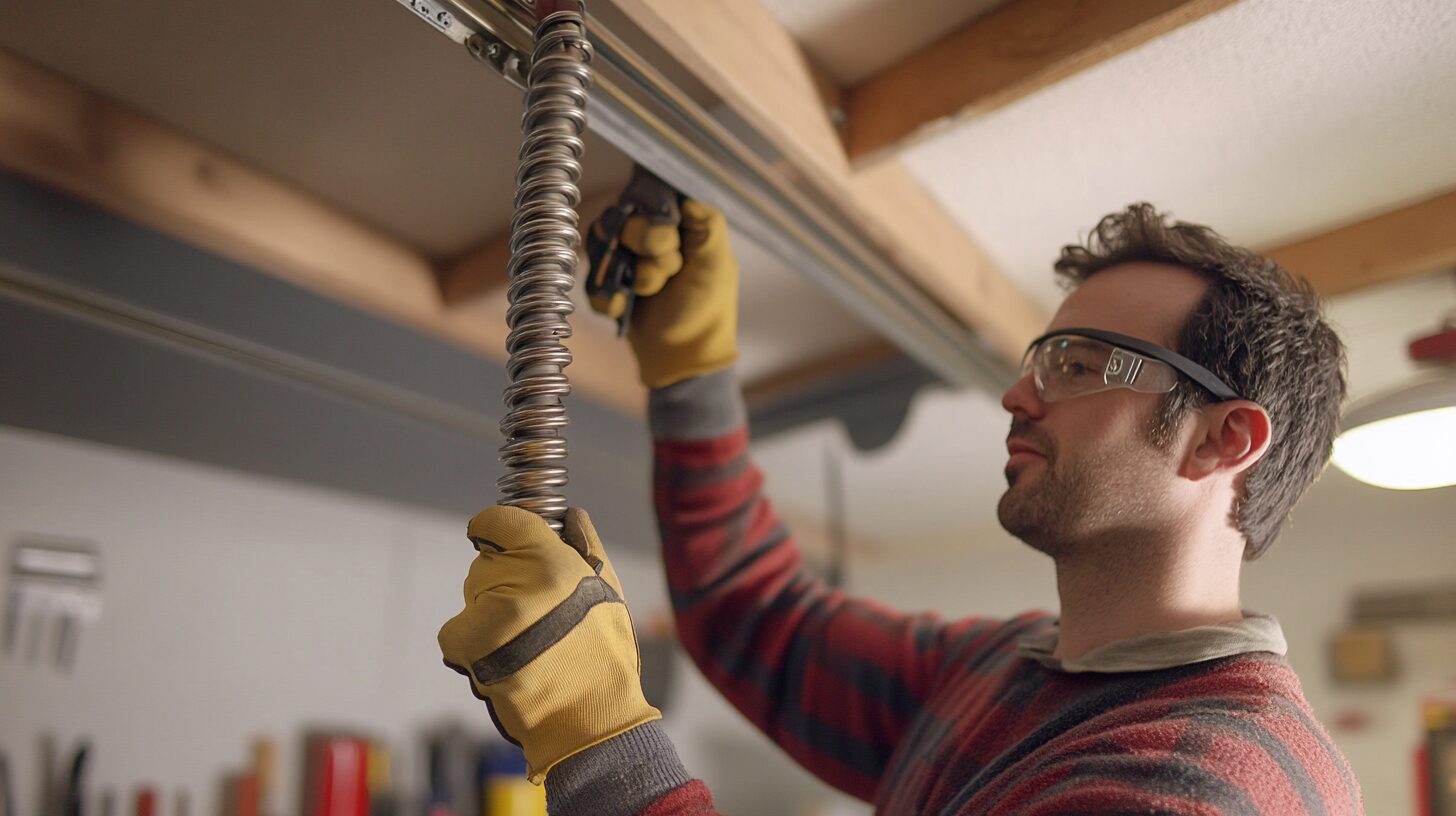Is your garage door stuck, making noises, or refusing to operate correctly? You’re not alone. This guide on how to fix a garage door will help you troubleshoot and resolve common problems. From power issues to misaligned tracks, we’ll walk you through straightforward solutions step by step.
Key Takeaways
- Ensure proper power supply by checking the outlet and circuit breaker, as power issues are a common cause of garage door malfunctions.
- Regularly inspect and maintain safety sensors, door springs, and moving parts to prevent operational issues and ensure safety.
- When troubleshooting fails or dealing with complex issues, seek professional help to ensure safe and effective repairs.
Check the Power Supply
Start by listing some forbidden forms of the keyword “circuit breaker” according to the rule 5. Begin by confirming that your garage door opener is receiving power. Check if the garage door opener is properly plugged into its power outlet. Test the outlet with another electronic device to ensure it is functioning correctly. Also, inspect the circuit breaker box for any tripped switches and reset them if necessary.
Examine the power cord for visible damage that might hinder the opener’s function. A damaged cord can lead to low voltage issues that impede the door’s operation. Properly powering your garage door opener can resolve many common issues, saving you both time and money.
Inspect the Safety Sensors
Safety sensors detect obstacles in the door’s path to prevent accidents. If your door only closes when you hold down the button, it could indicate that the safety sensors are misaligned or dirty. Align the sensors to maintain a clear line of sight for proper functionality.
Clean the sensors every three months to maintain their functionality. Remove any debris or overgrown plants obstructing the sensors’ line of sight. Clean and properly aligned sensors ensure safe and efficient garage door operation.
Test the Remote Control and Wall Switch
Malfunctioning remote controls, often due to depleted batteries, are a common issue. If the remote doesn’t work but the wall switch does, the remote is likely the issue. Replace the batteries to see if that resolves the problem. If not, the remote’s buttons may be worn out, requiring a replacement.
Cleaning the remote control sensor and the opener sensor can also improve functionality. Interference from other electronic devices can also disrupt the remote’s signal, so try to eliminate any potential sources of interference.
If both the remote and wall switch fail to operate the door, the issue could be with the transmitter or opener. Consult a professional to diagnose and fix the problem in such cases.
Examine the Garage Door Springs
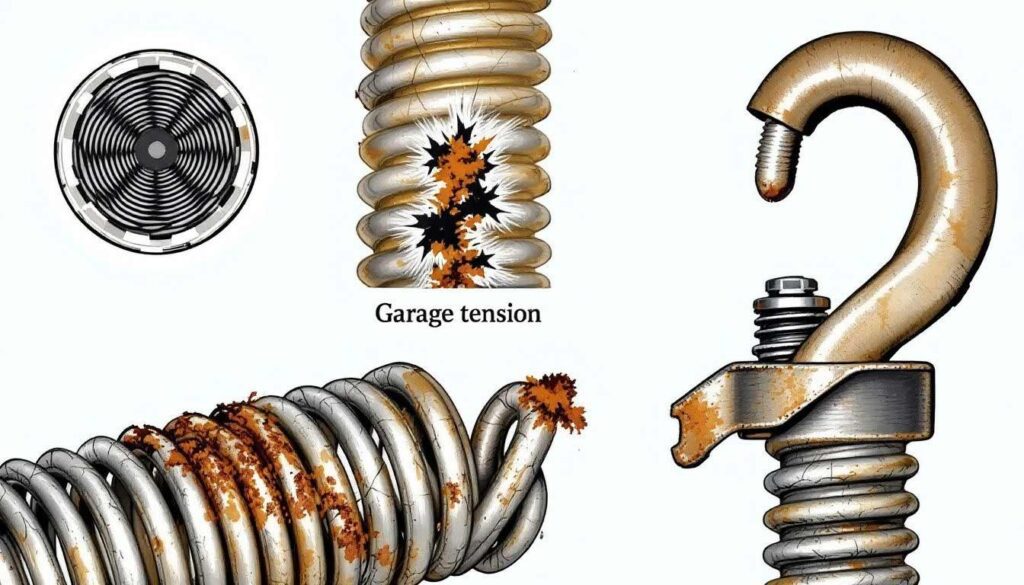
Springs are vital for lifting and lowering the garage door. Broken springs frequently cause garage doors to fail to open. If you hear a snapping sound, it could signify that one of the springs has broken and needs immediate attention. Look for visible signs of damage on the springs.
An imbalanced door or one side lifting higher than the other may indicate a damaged spring or cable. Address spring issues promptly; however, leave torsion spring replacements to professionals due to safety hazards.
Maintaining the springs properly can prevent many operational problems.
Lubricate Moving Parts
Lubricate your garage door’s moving parts regularly to maintain smooth operation and reduce noise. Use white lithium grease on metal parts like hinges, rollers, springs, and locking mechanisms to ensure free movement. Wipe down the parts before applying lubricant to remove any dirt.
Avoid lubricating the tracks to prevent the rollers from sticking. Regular maintenance, including biannual lubrication, extends the lifespan of garage door components and prevents wear and tear.
Adjust the Limit Settings
Adjust the up-limit and down-limit settings on the opener if the garage door doesn’t fully open or close. These settings determine the door’s travel distance when opening or closing. Adjust the up-limit switch if the motor continues running after the door opens. Position it closer to the motor unit.
Immediate reversal after touching the floor often points to a close-limit switch issue. Adjust the settings to ensure consistent and correct door operation.
Realign the Door Tracks
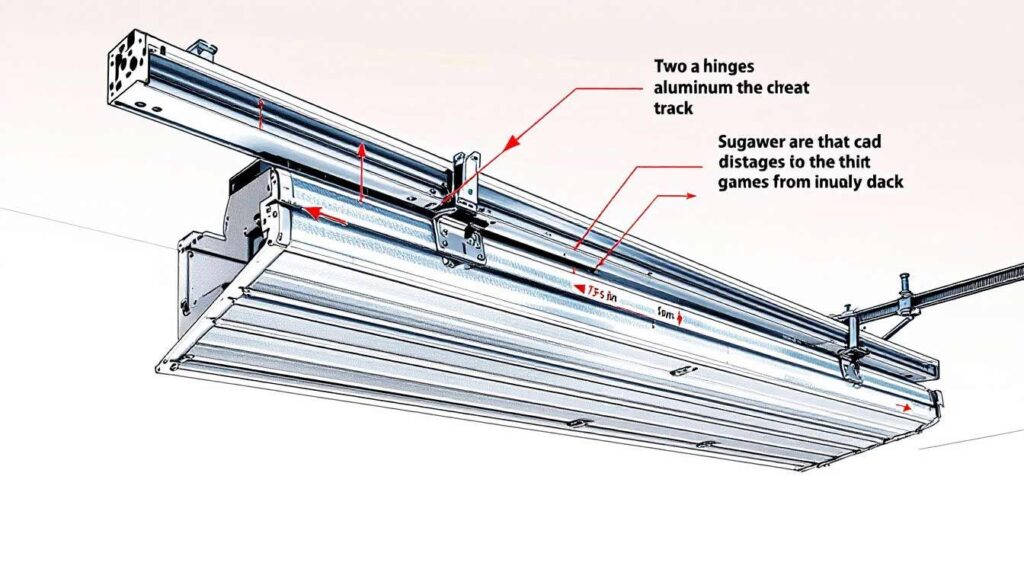
Misaligned tracks may cause uneven operation or a stuck garage door. Loosen the bolts holding the tracks to realign them. Gently tap any bent sections back into alignment with a rubber mallet. Retighten the bolts once the tracks are aligned properly.
Contact a technician if the door track is severely worn or damaged. Proper alignment of tracks ensures smooth operation and prevents further damage.
Tighten Loose Hardware
Loose hardware causes rattling noises and affects the garage door’s stability. Check regularly for loose screws or bolts and tighten them with the appropriate tools. Securing all hardware helps maintain smooth operation and extends the garage door’s life.
Tightening loose hardware effectively prevents many common garage door issues. It also reduces noise and improves functionality.
Replace Worn Rollers
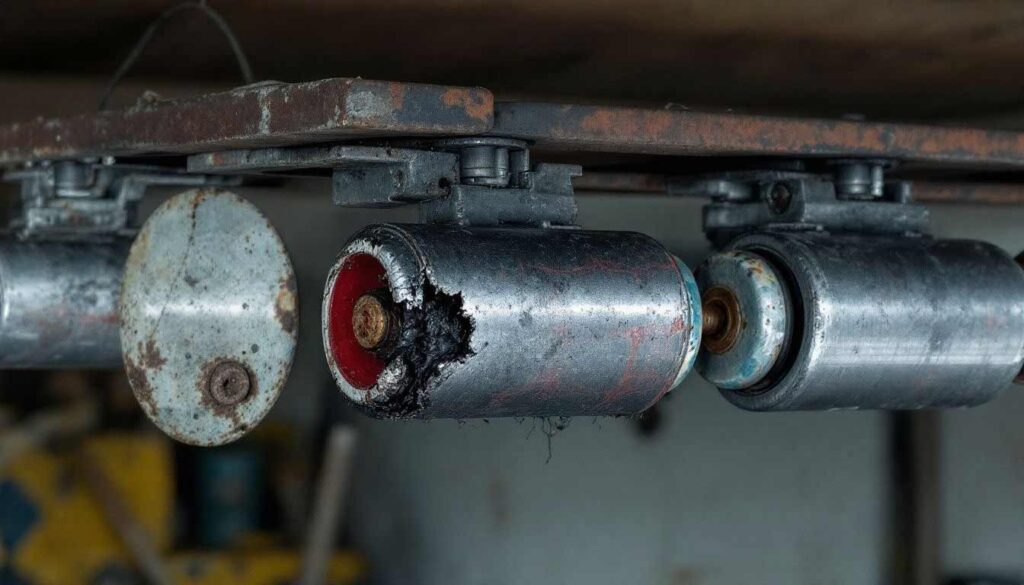
Inspect and replace worn rollers to ensure smooth garage door operation. Rust, grinding noises, or failure to spin freely indicate worn rollers. Replace the rollers if you notice any of these signs.
Choose rollers with ball bearings when replacing them, as they last longer, often over 15 years. Regular maintenance and timely replacement of worn rollers can prevent major issues with rusted rollers.
Check the Emergency Release Cord
The emergency release cord lets you manually operate the garage door during power failures or opener malfunctions. Test the emergency release cord with the door closed to ensure safety. Pulling the cord manually can help identify if the opener is malfunctioning.
Regular checks of the emergency release cord ensure its reliability in emergencies. This simple step can prevent you from being stuck in or out of your garage.
Troubleshoot Unusual Noises
Unusual garage door noises indicate underlying issues needing attention. Bent tracks, dry weather stripping, or problematic rollers might cause these noises. Lubricating moving parts regularly can mitigate noise issues.
Tightening loose nuts and bolts can reduce rattling and improve stability. Consult a professional for a thorough inspection if noises persist.
Addressing Keypad Issues
If the keypad isn’t working, resync it according to the manufacturer’s instructions and check the batteries. The keypad might not be synced with the opener, causing malfunction.
Refer to the user manual or contact the manufacturer if issues persist. Rebooting the garage door system often resolves keypad issues by clearing its memory and resetting it.
Fixing a Stuck Garage Door

Obstructions, rust, and misaligned tracks can cause a stuck garage door. Check the door’s path for obstacles and remove them. An uneven door might be due to rust or improperly set limits.
Realign the door by loosening screws, tapping the track back with a mallet, and retightening the screws. Regular maintenance and proper alignment can prevent the garage door from getting stuck.
When to Call a Professional
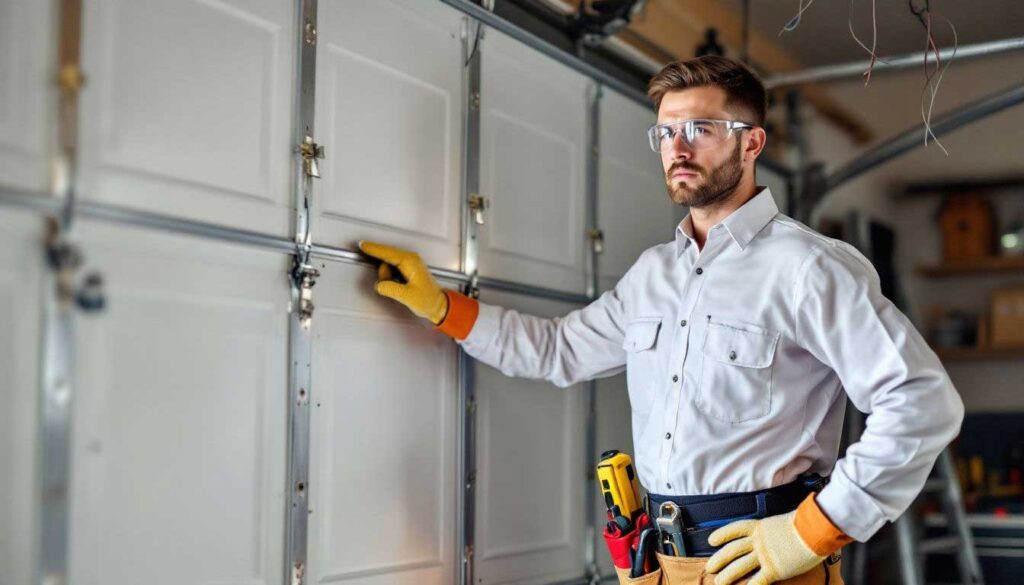
Although many garage door issues can be resolved with DIY efforts, some require professional intervention. Professionals should handle broken torsion springs or complex electrical problems to avoid safety hazards.
Call a professional if troubleshooting fails or the track is severely damaged. Professionals possess the expertise and tools to ensure safe and efficient garage door repair operation.
Summary
In summary, maintaining your garage door involves regular checks and maintenance of the power supply, safety sensors, remote control, springs, and other components. By following these troubleshooting tips, you can ensure your garage door operates smoothly and safely.
Remember, while many issues can be fixed on your own, don’t hesitate to call a professional for more complex problems. Regular maintenance and timely repairs can save you time, money, and frustration in the long run.
Frequently Asked Questions
Can you fix a garage door yourself?
Yes, you can fix a garage door yourself, as many repairs and replacements can be tackled as DIY projects. However, ensure you have the right tools and knowledge to avoid safety risks.
Why won’t my garage door open despite the opener running?
The garage door may not open due to a broken torsion spring or misaligned safety sensors. Inspect these components and make any necessary adjustments or replacements.
How often should I lubricate my garage door components?
You should lubricate your garage door components every six months to ensure smooth operation and minimize noise. Regular maintenance is key to the longevity of your door.
What should I do if my garage door remote control isn’t working?
To resolve issues with your garage door remote control, start by replacing the batteries, cleaning the sensor, and checking for interference. If these steps do not work, consider replacing the remote.
When should I call a professional for garage door repairs?
You should call a professional for garage door repairs when facing complex issues like broken torsion springs, severe track damage, or ongoing problems that persist after your troubleshooting efforts. It’s crucial to ensure safety and proper functioning in these situations.
